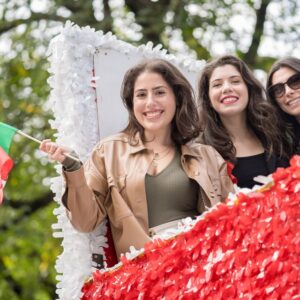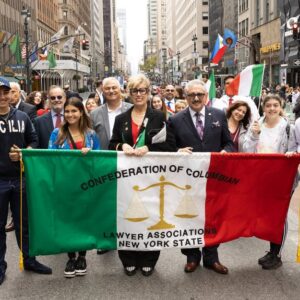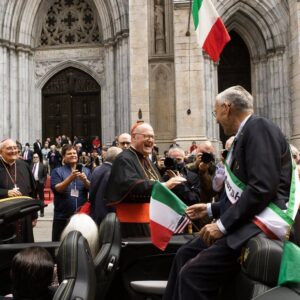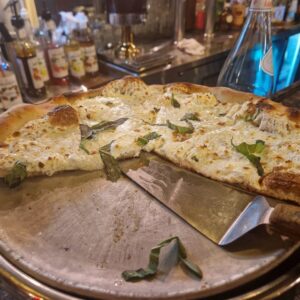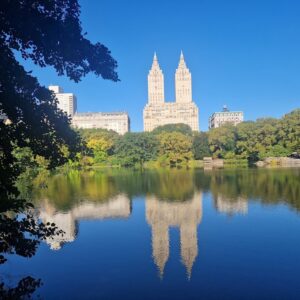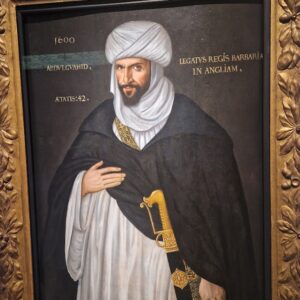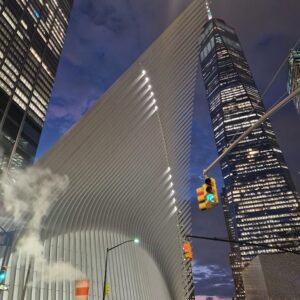Text by Robert Čoban
New Yorkers live in a “bubble”, while much of the US is still conservative and intransigent
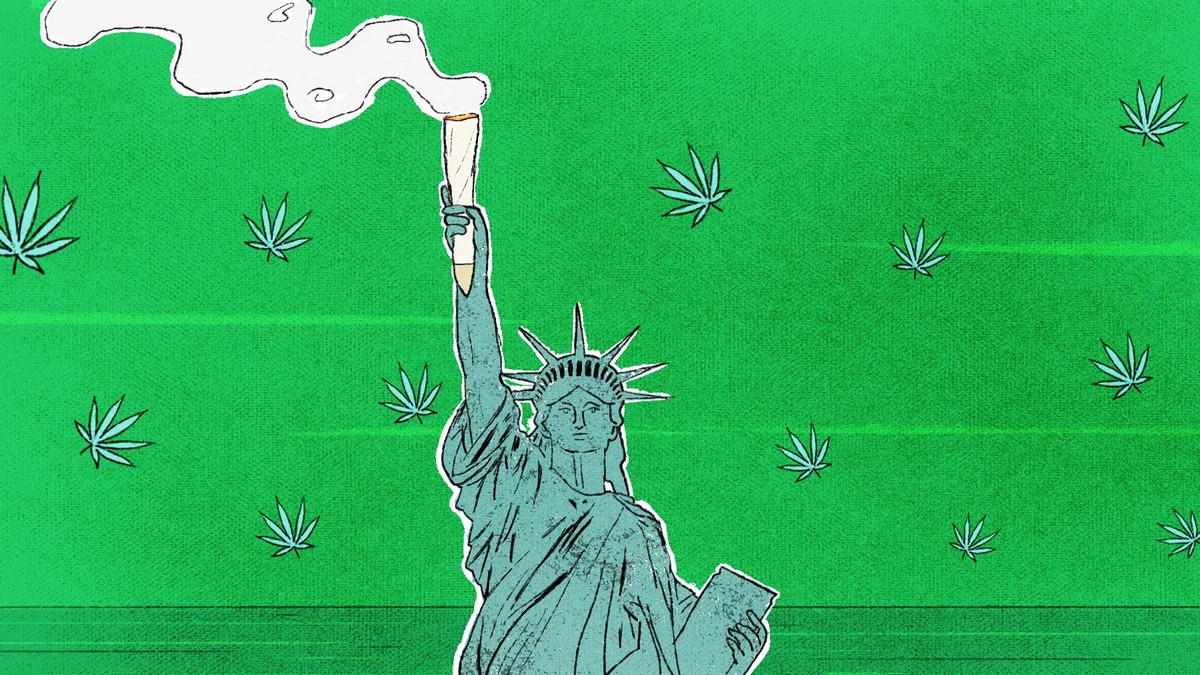
After the pandemic, New York City has reverted to its usual rhythm and the only thing that differs from the situation pre-2020 is the smell of marijuana literally at every step. New York’s web portal Vox illustrated this with a cartoon of the Statue of Liberty, holding a torch in its raised hand that resembles a large lit joint.
Our taxi couldn’t make it to the hotel because a good portion of Fifth Avenue was blocked off by the Columbus Day parade, which was held again last year after a year’s hiatus. The coronavirus was not the only thing that happened in 2020. The murder of the African-American George Floyd by a white police officer in May 2020 triggered a new wave of “political correctness” across the planet, so the monuments of many historical figures who, according to some people, were a symbol of colonialism, including Christopher Columbus, were demolished.
The first time that Columbus Day was renamed Indigenous People’s Day in the US was in 1992 in ultra-liberal Berkeley, California. Soon after, other cities followed suit – Austin, Cincinnati, Denver, Los Angeles, Philadelphia, Portland, San Francisco, Santa Fe, Seattle, Phoenix, Tacoma…
However, New York’s Italians, who celebrate their countryman Columbus, did not want to change the name of the celebration, so this year the 78th Columbus Day parade took place along the famous 5th Avenue, between 44th and 72nd streets.
The first time that Columbus Day was renamed Indigenous People’s Day in the US was in 1992 in ultra-liberal Berkeley, California
Our taxi stopped on Madison Avenue, so we dragged our suitcases to the Park Lane Hotel on foot, waiting for the policemen to let us cross Fifth Avenue during a break between the colourful “allegorical” cars whose loudspeakers transmitted the sounds of canzones, as well as the songs of New York’s most famous Italian of the 20 century – Frank Sinatra.
The procession passes by the third-largest synagogue in the world and the largest outside of Israel – Temple Emanu-el. Right after it, on Fifth Avenue, is a small (compared to the other buildings) mansion located between 66th and 67th streets. The building is surrounded by scaffolding, there is no longer a flag hanging on the mast in front of it, and the empty spot on the facade shows that there used to be a board that showed what the building had been used for. We are talking about the former Diplomatic Mission of Yugoslavia, later Serbia, which was sold a few weeks ago for $50 million. The Long Island governor, Robert Beeckman Livingston, was the first owner of the mansion. The building is also called the Beeckman House after him. Later, Emily Vanderbilt White, wife of Henry White, former US ambassador to France and Italy, and one of the daughters of the famous industrialist William K. Vanderbilt, known for financing the construction of New York’s Central Railway Station, also stayed there.
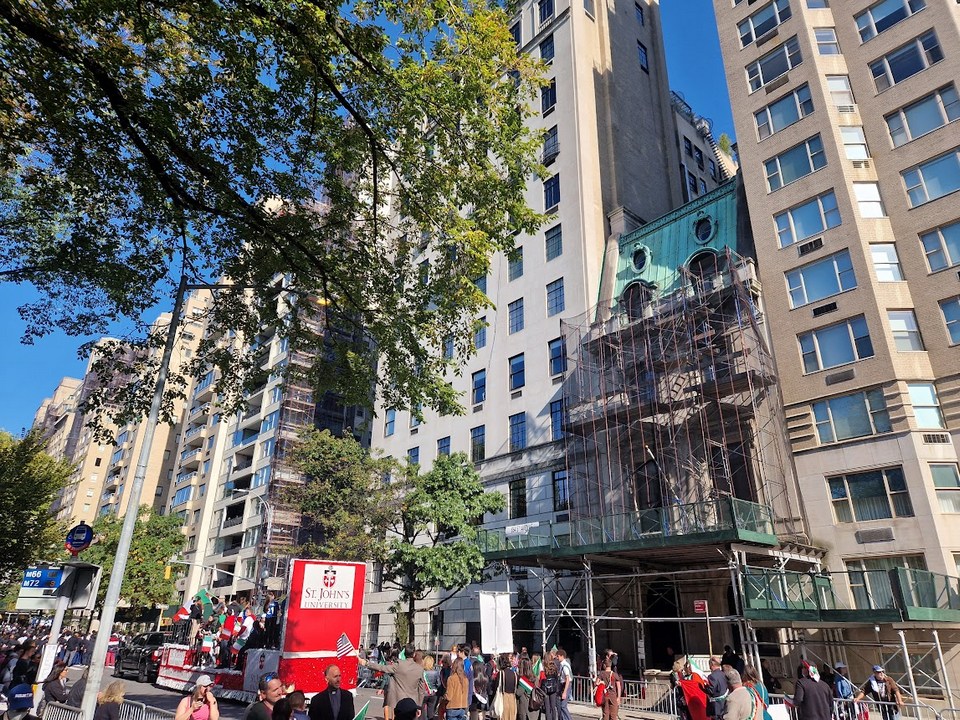
We decided to take a walk on a sunny October day and visit our favourite Bulgarian fondue restaurant Kashkaval Garden on 9th Avenue (everything is possible in New York, even Bulgarians making the best Swiss fondue). The first thing we noticed on the streets was the smell of marijuana, which two years ago you could only smell in front of certain clubs or in Times Square. Now, it is literally everywhere. In the spring of 2021, marijuana became legal in New York for ‘recreational use’ and anyone over the age of 21 can purchase it. The maximum amount you are allowed to possess is 24 grams. In a few months, legal cannabis shops sprung up on almost every corner. New York’s web portal Vox illustrated this with a cartoon of the Statue of Liberty, holding a torch in its raised hand that resembles a large lit joint.
“The Republicans were the biggest supporters of marijuana. On the one hand, they keep the poor segments of the population sedated and numb, with no consideration of rebellion, and at the same time, they reap huge profits from legal trade, which was previously in the shadow zone,” Mirko Ilić explains to me over a beer. He says that, along the stretch between his studio in Union Square to the Meat Packing district, where he lives, he can easily get high by inhaling the smoke from other people’s joints.
Mirko, the most famous designer from the former Yugoslavia, an artist whose works were on the front pages of the most renowned American newspapers and magazines (Time, The New York Times, The Wall Street Journal…), whose 38 art pieces are part of the MoMA’s permanent collection, came to the US in 1986.
Whenever I come to New York, I always meet up with Mirko and every meeting of ours sparks a new idea and project. In 2017, Mirko launched the Tolerance project, under which auspices he stages exhibitions around the world (there have been 144 so far) and displays posters which feature the work of some of today’s most important designers on the topic of tolerance. Together, we staged this exhibition three times in Novi Sad, while always displaying new posters by designers from all over the world.
When I visited New York before the pandemic, Mirko’s studio was located in the Milton Glaser building, the famous author of the “I love NY” slogan and logo. After Glaser died in 2020, his family sold the building and Mirko moved into a new studio in Union Square next to the Decker Building where Andy Warhol had his Factory from 1967 to 1973.
The LGBTQ classification also includes a non-binary category for those people who do not want to decide what gender they are
The drinking was over when my younger daughter India and her friend Damaris came to join us. Damaris moved in with her father from Novi Sad to New York City after her parents divorced. She tells us that what we see in American movies and series regarding the special classification of different sexual identities has become a reality in New York’s elementary and high schools. The LGBTQ classification also includes a non-binary category for those people who do not want to decide what gender they are. Everyone takes these things very seriously in educational institutions and other segments of public life here. Mirko confirms that that is true, but also that the residents of New York live in a bubble, while a good part of the USA is still conservative and intransigent, maybe even more so than ten years ago.
In the middle of Union Square Park, Mirko shows me a flagpole with an American flag, on the bottom of which is a “fascio”, a sheaf that is a symbol of Italian fascism. It was built at the end of the twenties at a time when Mussolini was still a generally accepted figure among Americans and a favourite person of most Italians here. No one later thought of tearing down or re-designing that mast.
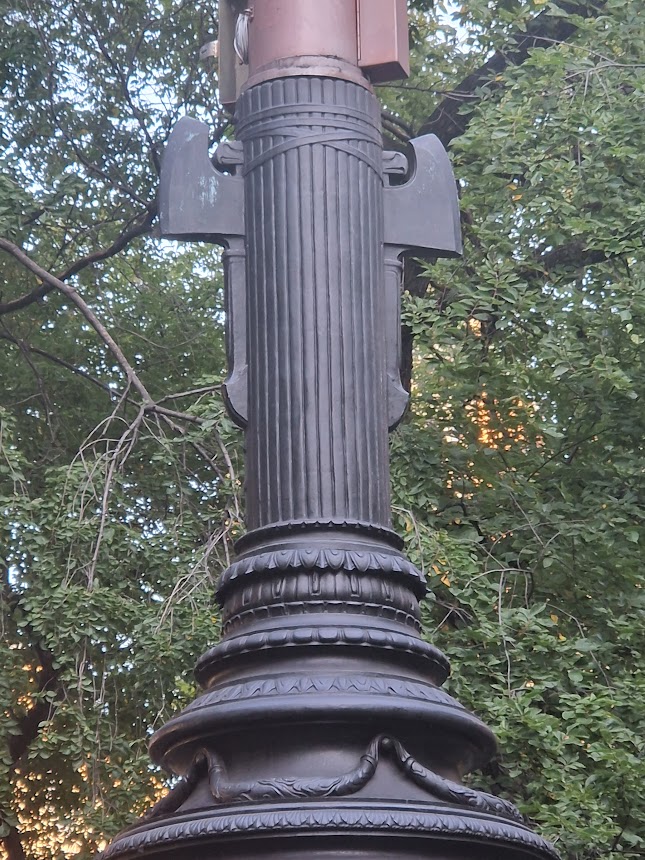
After an early breakfast, while reading The New York Times, we go for a walk in Central Park. In Strawberry fields, a busker sings Lennon’s “Imagine”, while a guard is still standing a few steps away, at the entrance to the Dakota building. It has been like this since December 8, 1980, when in the dark passage of this mystical New York building overlooking Central Park, Mark David Chapman fired fatal shots at the famous founder of the Beatles.
Twelve years earlier, Roman Polanski used this building as a location for his iconic film “Rosemary’s Baby”. By the way, the Board of Apartment Owners has several times cancelled the sale of apartments to some celebrities that the Board members considered not “worthy” of living in one of the most iconic buildings in the world, including Antonio Banderas and Melanie Griffith, Billy Joel, Madonna and Cher. Biljana Srbljanović told me how she once spent a New Year’s Eve in the Dakota, in the apartment owned by the American director of her play “Family Stories” whose father is a rich film producer.
The reflection of the San Remo building (built in 1930) on the surface of the lake in Central Park is one of the most beautiful sights in New York City. We cross to the other side of the park and emerge at the Ukrainian Institute on Fifth Avenue, where a photo exhibition on Russian war crimes in Ukraine was recently staged.
We arrive in front of the Metropolitan Museum (the Met) a little before 10 o’clock and join the queue that has already formed. Going to the Met is a pilgrimage of sorts every time we come to New York.
At the Tudors exhibition at the Met, which depicts portraits of numerous kings, queens, princes and princesses from this dynasty that ruled England from 1485 to 1603, we notice the portrait of the Moroccan ambassador Abd el-Ouahed ben Messaoud ben Mohammed Anoun, who lived months at the Tudor court for six months, to establish an Anglo-Moroccan alliance against Spain. His portrait is the first image of a Muslim created in England. It is believed that he inspired Shakespeare’s Othello.
That evening we went to Lombardi’s Pizza, officially the oldest pizzeria in America. The prices of pizza and wine here have not changed since 2019, except that for us Europeans everything is a bit more expensive due to the stronger dollar against the euro.
The legend says that the Italian immigrant Gennaro Lombardi started selling “tomato pies” in 1897, and in 1905, he got a license to open the first pizzeria in New York City and the entire USA
The story goes that the Italian immigrant Gennaro Lombardi started selling “tomato pies” in 1897, and in 1905, he got a license to open the first pizzeria in New York City and the entire USA. Very quickly he had famous clientele coming to the pizzeria, including the renowned Italian tenor Enrico Caruso. In 1984, the pizzeria closed, only to be opened 10 years later one block away by Gennaro’s grandson, Gennaro Lombardi III. In 2005, on its 100th anniversary, and ten years later, on its 110th anniversary, Lombardi’s Pizza charged only 5 cents for a pizza, the same as it cost in 1905, when the pizzeria was founded. The pizza industry today is valued at $45 billion.
As always, when I come to New York I meet up with some of “our people” who live here. Adnan and Sead are members of the Bosniak community from the north of Montenegro, which is the most populous ethnic group from the former Yugoslavia in New York City. There are more of them than Serbs, Croats and Albanians. Nevena is the daughter of my friend, Novi Sad’s photographer Dragutin Savić. She is stationed in Brooklyn and works as a doctor specializing in autism in children. Milan Mumin, a famous musician and the founder of the band Love Hunters who comes to New York twice a year to drive a taxi, shows me his promotional video that he shot for the Museum of Vojvodina. After years of working on cruise ships and for various airlines, Djordje from Petrovaradin made his dream of living in New York come true. These are all very successful people who are now earning much more than they ever could if they stayed in their native towns. They travel around the world and occasionally stop by their motherland. Except for Mumin, none of them is contemplating returning to live here.
